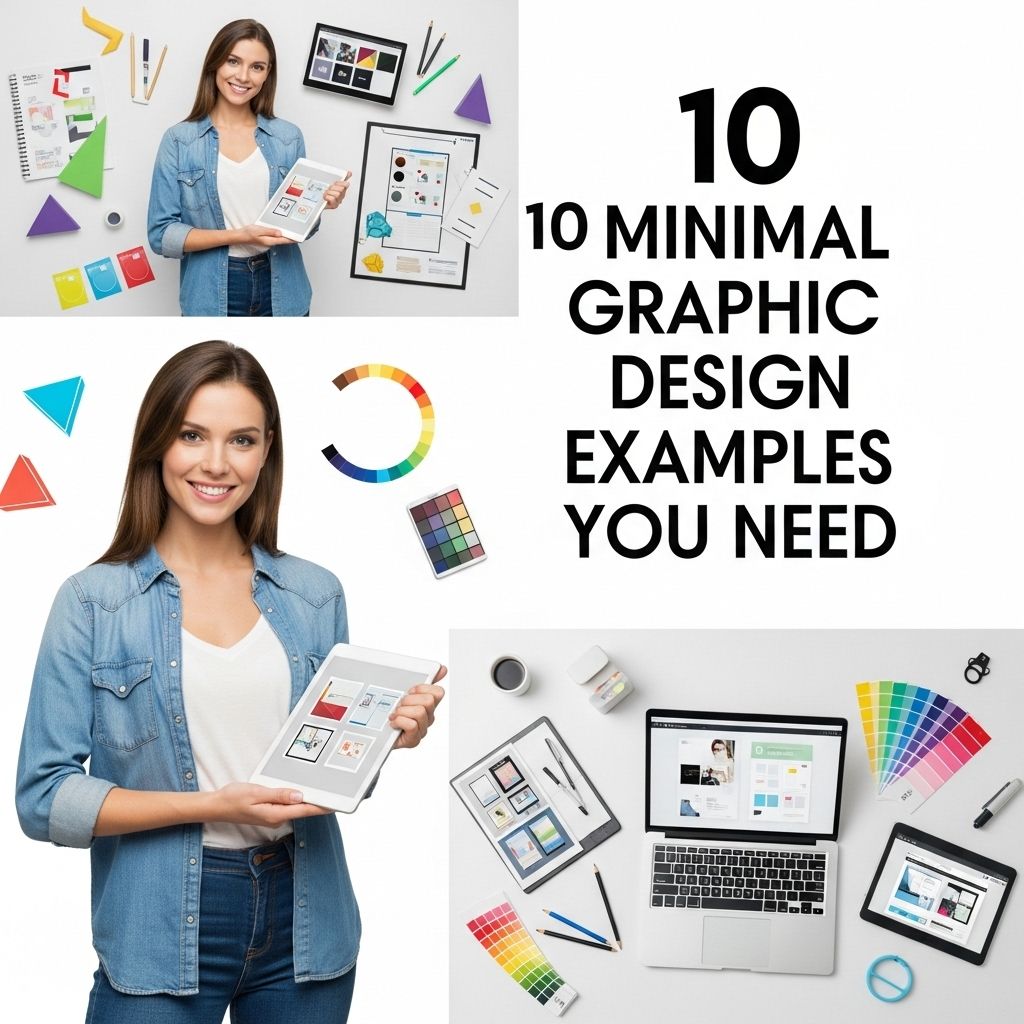In a world increasingly saturated with visual content, minimal graphic design stands out as a refreshing approach that focuses on simplicity and clarity. By stripping away unnecessary elements, this design philosophy emphasizes the essentials, allowing the message to shine through. This article delves into the principles of minimal graphic design and showcases ten outstanding examples that embody this aesthetic.
Understanding Minimalism in Graphic Design
Minimal graphic design is characterized by the use of simple shapes, limited color palettes, and open space. Here are some key principles:
- Less is More: Reducing visual clutter enhances focus on the central message.
- Functionality: Every design element serves a purpose and contributes to the overall effectiveness.
- Whitespace: Strategic use of whitespace improves readability and aesthetic appeal.
- Limited Color Palette: Using a few colors can create a strong visual identity.
10 World-Class Minimal Graphic Design Examples
Below are ten remarkable minimal graphic design examples that brilliantly illustrate this design philosophy. Each example prioritizes clarity, functionality, and aesthetic appeal.
1. AirBNB Logo
The Airbnb logo, known as the Bélo, is an emblem of belonging and community. Its simplistic design consists of a fluid shape that represents a combination of a heart, a location pin, and the letter A. This logo successfully communicates the brand’s mission while being visually appealing and memorable.
2. Apple Product Advertisements
Apple is renowned for its minimalistic approach in advertising. Its product ads often feature a single product against a white background, emphasizing the design and functionality of the item. This strategy not only draws attention but also creates a high-end allure around their products.
3. Google’s Material Design
Google’s Material Design principles focus on tactile surfaces and bold colors while maintaining a minimal aesthetic. The design utilizes grid-based layouts, responsive animations, and depth effects, ensuring that the user interface is intuitive and straightforward.
4. IKEA Catalog
The IKEA catalog exemplifies minimal graphic design through its clean layout and straightforward photography. Each page features only a few items, allowing the viewer to focus on the products without distractions.
5. Spotify Playlists
Spotify’s playlist covers often showcase minimalist design through simple typography and imagery. By using a limited color palette and bold fonts, Spotify ensures that each playlist cover is visually distinct yet cohesive within the platform.
6. Dropbox Branding
Dropbox employs a minimal design throughout its branding and interface. The logo features a simple box illustration in a blue color scheme, conveying the idea of storage without unnecessary complexity. The overall design is user-friendly and focuses on functionality.
7. Twitter’s Interface
Twitter’s user interface is a prime example of minimal graphic design in action. The platform uses a clean layout with a focus on the tweet stream, allowing users to engage with content efficiently. The blue and white color scheme contributes to a simple yet effective design.
8. Muji Products
Muji is known for its no-brand philosophy, which is evident in its product design. The packaging and promotional materials for Muji items feature minimal text and an emphasis on the simplicity and functionality of the products themselves.
9. Airbnb Magazine
The Airbnb Magazine showcases stunning photography paired with minimal text. The layout is clean and uncluttered, allowing the imagery to evoke emotions and tell stories without being overwhelmed by excessive words.
10. Adobe Creative Cloud Icons
Adobe’s Creative Cloud icons have undergone a transformation towards minimalism, featuring flat designs with simple shapes and a limited color palette. This approach not only modernizes the icons but also maintains consistency across the suite of applications.
The Benefits of Minimal Graphic Design
There are numerous advantages to adopting a minimal graphic design approach:
- Enhanced Communication: By focusing on essential elements, the message is conveyed more effectively.
- Timelessness: Minimal designs tend to age better, avoiding trends that quickly become outdated.
- Versatility: Minimal designs are adaptable across various platforms and media.
- User Experience: A clean design improves usability and user satisfaction.
Conclusion
Minimal graphic design strips away the unnecessary to focus on what truly matters: effective communication and aesthetic clarity. The examples showcased in this article illustrate how minimalism can be applied across various industries, from technology to lifestyle branding. As visual clutter continues to rise, the principles of minimal graphic design will undoubtedly remain relevant and impactful for both designers and audiences alike.
FAQ
What is minimal graphic design?
Minimal graphic design is a style that emphasizes simplicity and the removal of unnecessary elements, focusing on essential features to create a clean, effective visual communication.
Why is minimalism important in graphic design?
Minimalism is important in graphic design as it enhances clarity, improves user experience, and allows the core message to stand out without distractions.
Can minimal graphic design be effective for branding?
Yes, minimal graphic design can be highly effective for branding by creating memorable logos and visuals that convey the brand’s identity in a straightforward manner.
What are some key elements of minimal graphic design?
Key elements of minimal graphic design include limited color palettes, ample white space, simple typography, and a focus on geometric shapes or lines.
How can I incorporate minimal graphic design into my projects?
To incorporate minimal graphic design into your projects, start by simplifying your layout, using fewer colors, and prioritizing essential content to create a cohesive design.
Are there any famous examples of minimal graphic design?
Yes, famous examples of minimal graphic design include the logos of brands like Apple, Nike, and Google, which use simple shapes and limited colors for strong visual impact.




